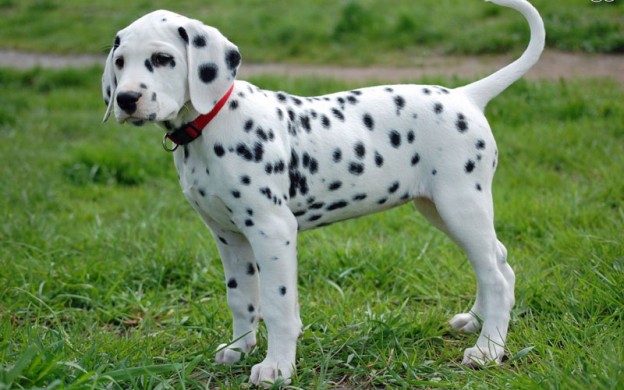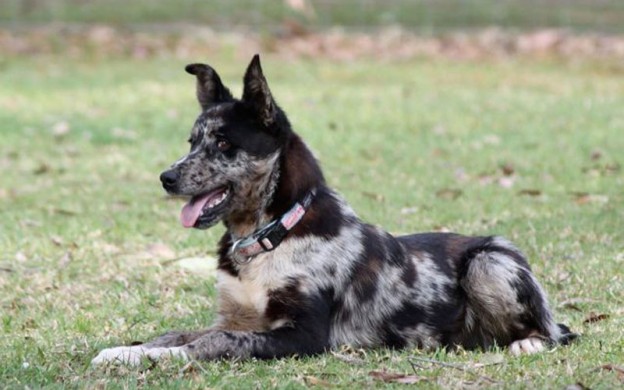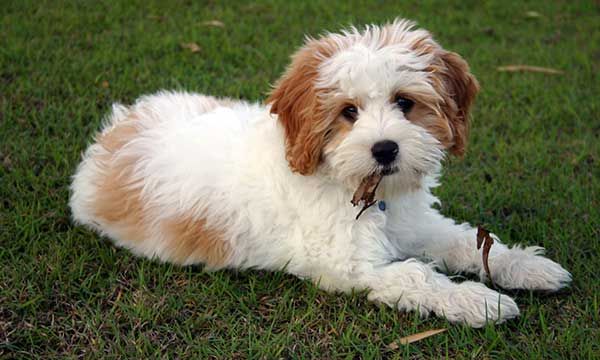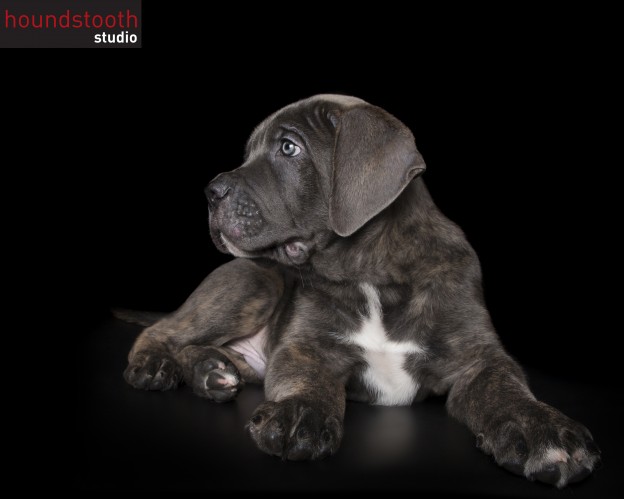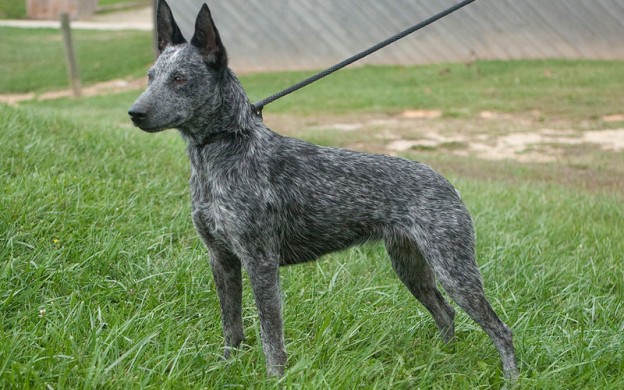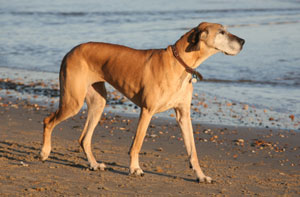
Here you will find Great Dane information such as its personality traits, favourite activities and the breed’s history.
Facts
Personality: Great Danes are lovable giants which love human companionship. Mature Danes enjoy nothing more than a snuggle on the couch or a slow stroll around the block. As long as they are with you they are happy, carefree dogs. Danes are also great with children if socialised correctly and make wonderful companions. Great Dane puppies grow big very fast but do not reach maturity until the age of about three, Sharon advises. Your Great Dane will love you till the day it dies. You will be paid back 100 fold!
Favourite activities: Hanging out with YOU! Danes love to be part of the action and will help you with whatever you may be doing, from hanging the washing out to gardening and even cooking.
Backyard requirements: Priority is good strong fencing, Sharon advises. Plenty of shaded areas and a space to keep out of rain/wind and access to clean fresh water at all times. Danes, like all dogs, can get bored so make sure you have adequate things for your Dane to do when you are not at home. Remember: if your Dane digs a hole, its going to be a big one!
They would suit: Someone who is a bit laidback, who can cope with a very large dog and the occasional bit of drooling/slobber, laughs Sharon. Someone who can spend time with their dog, not leave it in the yard with no attention. A Dane would not suit a person who is extremely active as due to the dogs sheer size, care must be taken with their long limbs and joints … over-exercising is not recommended or you could cause the dog serious harm.
Watchdog qualities: Danes make great watchdogs and their size alone is sure to deter any would-be thieves. Their bark is really worse than their bite, Sharon laughs. But lets face it, if a Great Dane was barking in your face, would you enter?
Great Danes have a very colourful history. In fact, many believe the lovable breed can be traced as far back as 3000BC, with many drawings depicting Dane-like dogs appearing on Egyptian artifacts and monuments. There is also evidence that these dogs were drawn on articles in Babylonian temples, some of these dating back to 2000BC. Many depict Assyrian men walking alongside huge dogs.
Some Zoologists believe that Great Danes could have originated in Tibet as there is a similarity between Tibetan Mastiffs and the Danes. Similarly, it has been debated over the years whether or not the Irish Wolfhound or Irish Greyhound played a role in the Great Danes development. Whatever their true origins, its clear Great Danes have been much-loved and loyal companions to many families throughout history … and today, not much has changed.
Times gone by
Great Danes had many duties, including guarding castles, pulling carts and participating in battles alongside their worrier ancestors. Due to their great speed and intimidating size, the Danes were also used to hunt wild boar and stags during medieval times, when many Nobles bred and raised these dogs. Because the dogs ears used to get damaged during the hunt, ear cropping came into fashion up until recently, when it was banned in Australia and in some parts of Europe. Sadly, you may still see some Danes with their ears cropped as this practice is still continued in America.
Known as the Apollo of Dogs, this adorable breed is more likely to be seen snuggled up on a couch, huge legs stretched out, or crammed in the back of a car on the way to an outing with the family. Needless to say this, lovable breed has been mans best friend for centuries, so its no wonder they are considered one of the best-natured breeds by many.
One person who completely agrees is Sharon Wright, who has been breeding these gorgeous giants for more than 31 years. She knows all too well how quickly you’ll fall in love with them and why they are so popular. The breed is always very happy to be with their person and also to be part of family life, Sharon tells Dogs Life. When they are happy everybody knows; you need to stand clear of the tail! she says with a smile.
Danes are also great family dogs, howe’ver like many big dogs they can tend to get into trouble for accidentally knocking over a young child, especially during times of excitement. They are very family oriented and love children if they have grown up with them, Sharon says. You do have to watch young children as they could be knocked over accidentally by an excited dog. However, children should never be left alone with any dog, especially when a dog is eating.
To ensure your Great Dane grows up to be child-friendly, socialise them around children from a young age. All puppies should be exposed to everything the world can offer at a young age as this will help prevent your dog from becoming fearful. This is particularly important regarding children, strange people, adults of different sexes and dogs of all shapes and sizes.
Needs
Because the Dane is such a large dog, care must be taken during puppyhood not to overexert your growing pup. Great Danes should never be allowed to jump from high places as this puts extra strain on their fast-growing limbs and bones. Rough play with other dogs is also not advisable for any large breed during puppyhood and adolescence.
Care must be taken when it comes to exercise. It is not advisable to run your young dog around as this will add to the strain of growing and can lead to orthopaedic problems. The breed doesn’t require much exercise for the first 12-months, Sharon states. After that you can start gently and then increase. Once they are older they tend to not want to get off the lounge/bed.
Great Danes can grow into HUGE dogs so please pop out and visit a fully grown Great Dane before you decide to purchase one. People must be aware of how big they grow, Sharon warns. It is surprising how many people return a dog because he is so big. People need to realise that a Dane wants to be with them, not left outside with no attention. Owners also need to be patient, especially if a Dane makes a mistake such as digging a hole. The hole is going to be very big! Whatever they do, it is very big.
Because of the Danes sheer size, training is very important. ALL dogs need training, howe’ver it is especially imperative for larger breeds. Lets face it, there is nothing worse than a Great Dane, or any large dog, greeting you by jumping up when you return from work. This may be sweet and cute during the puppy stages, but a fully grown Great Dane would knock you over! They would need basic obedience, Sharon suggests. You could not have a large dog and not have it under your control. There are a number of dogs that do obedience and there have been the occasional dogs doing agility, endurance and even sledding.
Grooming is never an issue with a Great Dane. Their coats are easy to manage and a brush once a week with a rubber mitt or brush is recommended to help stimulate blood flow to the skin and keep the coat in mint condition. This will also help remove any loose, dead hairs from the short coat. Danes only need to be bathed when necessary and don’t tend to have that doggy smell familiar with some other breeds. The dog would need washing with a good-quality shampoo when the need arises and their ears and nails would need attention, perhaps monthly, Sharon adds.
Make sure you always purchase your Dane from a reputable breeder and check for hip and elbow scores to eliminate hereditary elbow and hip dysplasia. Good breeders will not breed dogs with any problems, however always go in with a list of questions so you can check if any issues are present in any bloodlines. Do your homework and ask around. Good breeders love their dogs and will interview you to see if you are suitable for the breed. Also ask your breeder about entropian and cardiomyopathy as these have presented in some breed lines.
Breed Care
Daily: A run in the park or a walk daily is needed for adult Great Danes to keep them stimulated, even though most would like to just sleep on the couch. Care must be taken when the dogs are pups. Please ask your breeder about exercising young pups.
Weekly: A brush with a rubber mitt or brush to remove dead hair and to stimulate the skin. If you have an active Dane who enjoys getting muddy, a weekly wash could be in order. These are wash-and-wear dogs with quick-dry coats. However, make sure you don’t over-wash your Dane or you’ll strip his lovely coat of all the natural oils.
Monthly: Heartworm and gastrointestinal worming treatments and flea prevention. It is also a good idea to check your Danes ears and give them a wipe out to prevent infection. Clip nails as needed.
Breed Contacts
For Australian breed clubs please visit the Australian National Kennel Council website www.ankc.aust.com or give the canine control council in your state a call. They will be able to direct you to top breeders in your state. For New Zealand breed clubs please visit the website at www.nzkc.org.nz.
If you want to find out more regarding hereditary problems in any breed of dog, check out www.vetsci.usyd.edu.au/lida/ for a comprehensive easy-to-read explanation of hereditary problems for all breeds … this is a great place to do your homework before purchasing a pup.



